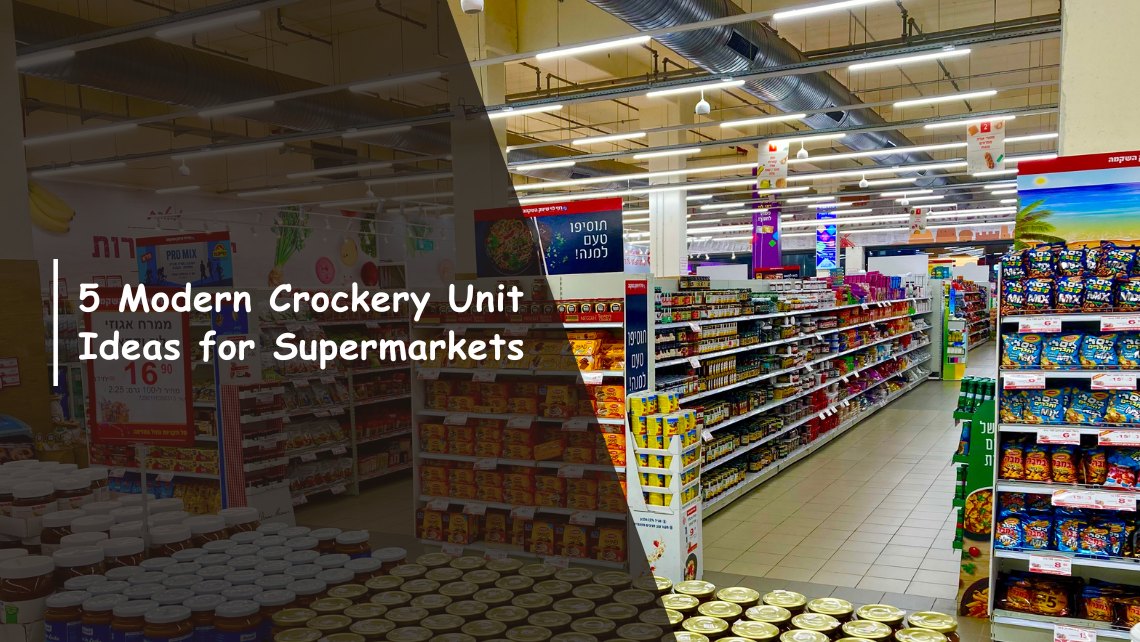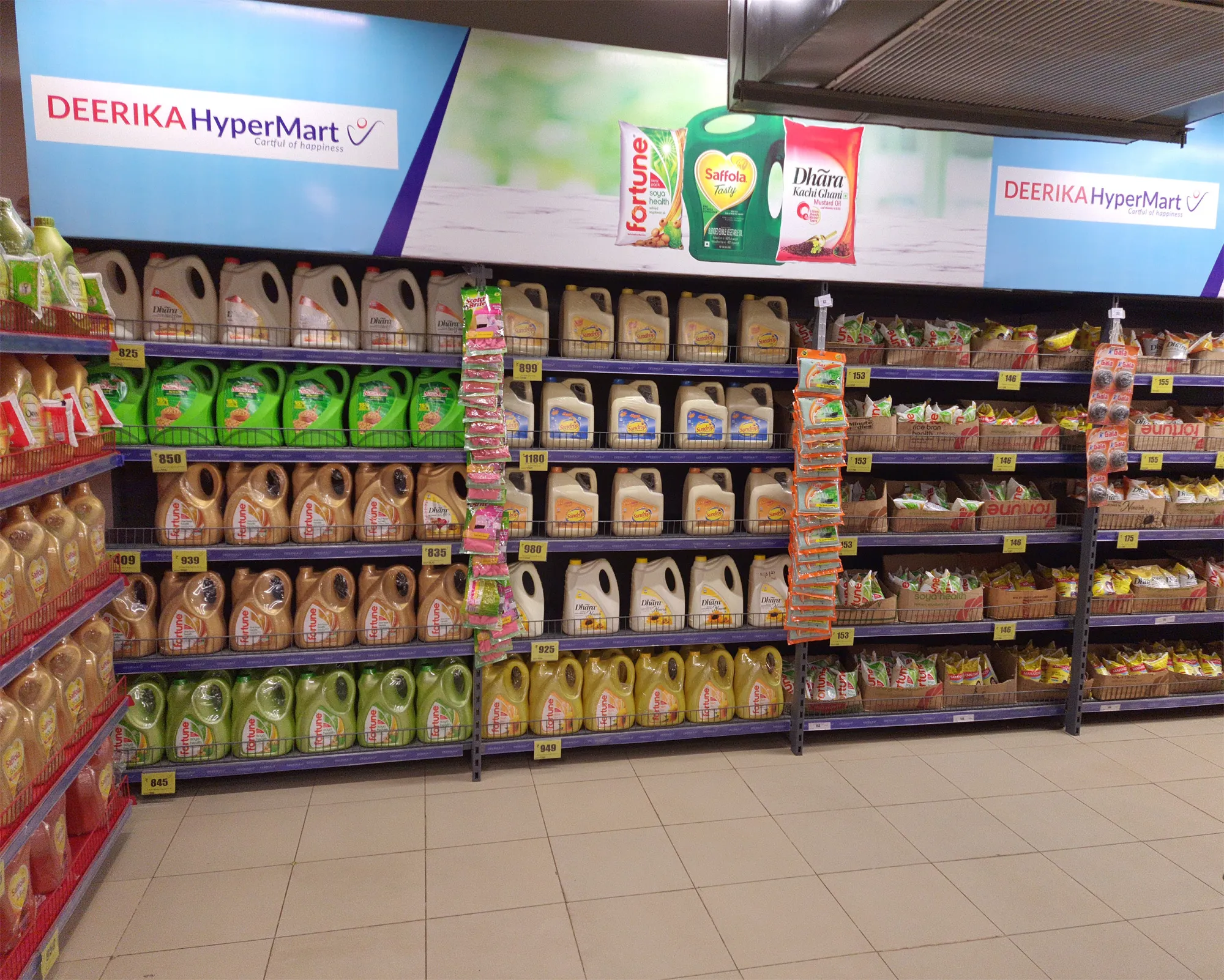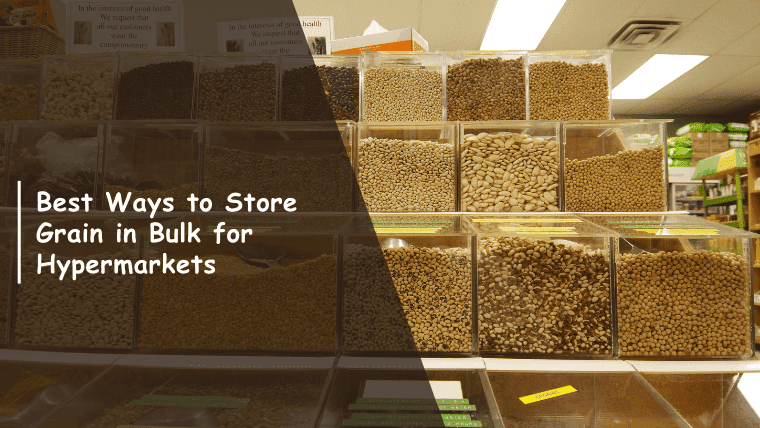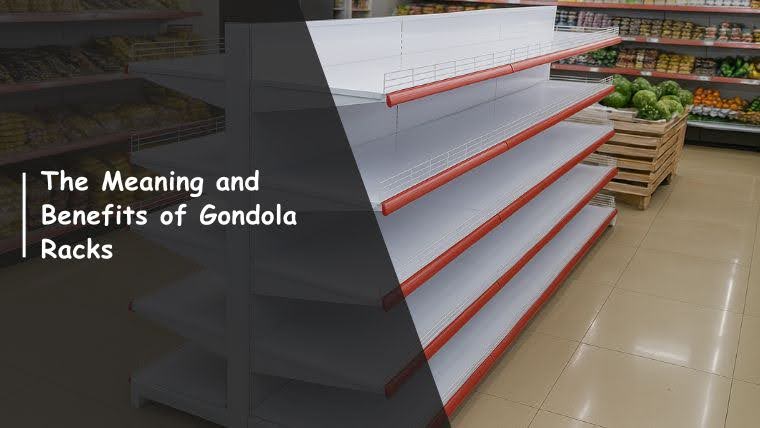5 Modern Crockery Unit Ideas for Your Supermarket
Explore 5 modern crockery unit designs that improve shelf visibility, save store space, and support efficient supermarket layout and product organisation.

Explore 5 modern crockery unit designs that improve shelf visibility, save store space, and support efficient supermarket layout and product organisation.

Crowded shelves, chipped plates, and mismatched layouts often turn your crockery section into dead space. But it doesn’t have to be this way.
In any supermarket, crockery serves a dual purpose. It’s both a utility-driven category and a visual magnet for walk-ins. From ceramic dinner sets and stainless steel thalis to plastic serveware, how you display these items directly impacts customer behaviour and purchase volume.
That’s where modern crockery unit designs help. They bring structure to your layout, protect fragile items, and make high-margin products more accessible.
This blog explores five crockery unit designs that are practical, durable, and perfect for Indian supermarkets of all sizes.
Crockery may seem like a small category, but poor displays can lead to broken items, messy shelves, and missed sales.
When your crockery unit is well-designed, it works harder for you and your customers.
Here’s what a smart crockery unit design brings to your supermarket:
Adding a well-designed crockery unit is not just about appearance. It improves your store’s efficiency, supports faster decision-making, and builds customer trust.
Not every crockery section needs the same solution. The right design depends on the amount of space you have, the materials you stock, and how your customers shop.
Instead of default shelving, consider units that match your store’s layout, support faster browsing, and reduce clutter.
Here are five crockery unit designs that balance function, visibility, and visual appeal across different supermarket formats:
Open shelves are the most straightforward, accessible, and versatile crockery unit type for fast-moving or affordable SKUs.
Here’s why they work well in high-footfall supermarkets:
These units are ideal near kitchenware or home essentials sections, especially during sale periods or festive campaigns.
Today’s shoppers are increasingly conscious about the origins of their products and how they’re presented. Eco-friendly crockery unit designs help supermarkets align with sustainability trends while maintaining a modern aesthetic.
Here’s how to integrate sustainability into your display:
Eco-friendly units are ideal for niche zones, such as wellness aisles or the ‘eco-corner’ that many new-generation supermarkets are establishing for premium or organic buyers.
Suggested Read: How to Start a Mini Supermarket Business
If floor space is limited or the layout requires frequent updates, modular wall-mounted units are the ideal choice.
These designs use vertical space effectively and support flexible merchandising:
These units are especially effective in aisle endcaps, promotional corners, or behind billing counters for premium crockery add-ons.
For supermarkets with extensive crockery selections, multi-tiered units offer the best of both visibility and space-saving benefits.
These units allow you to stack products vertically while using the sides to hold accessories or paired items. Here’s how they benefit your store:
Multi-tiered units are ideal for mid-aisle placement or in front of themed zones, such as dinner sets, table accessories, or festive promotions.
Suggested Read: How to Choose the Right Display Rack for Your Retail Store: A Complete Guide
If your store sells handcrafted, regional, or festive crockery, artistic crockery unit designs help you present it with the flair it deserves.
These units blend traditional aesthetics with retail practicality:
This type of crockery unit design is not just for display. It also supports storytelling, seasonality, and customer emotions, which directly influence buying decisions.
Before investing in a new crockery unit, ensure it fits your store’s layout, inventory, and customer expectations. Use the following checklist to make the right choice:
1. Match the Rack to the Material Type
Glassware needs dividers and padding; steel or melamine sets require strong, weight-bearing shelves. Choose a design that safely supports your most common SKUs.
2. Consider Aisle Traffic and Floor Space
Compact stores should avoid bulky freestanding units. Opt for wall-mounted or corner designs that keep customer flow smooth and uncluttered.
3. Prioritise Easy Maintenance
Choose finishes that resist dust, stains, and corrosion. Open shelves should allow for easy daily cleaning, while closed units need accessible hinges or panels.
4. Align with Store Themes or Zones
Eco, festive, or gifting zones need different styles. Ensure your crockery units visually align with their surrounding displays for a cohesive in-store experience.
5. Plan for Flexibility and Restocking
Choose modular units or adjustable shelving if your stock rotation is frequent. It helps your team manage displays without needing major layout changes.
A thoughtful crockery unit choice balances form and function, making your displays safer, smarter, and more aligned with how your customers shop.
Your supermarket’s crockery section should do more than store items. It should help sell better, reduce handling risk, and support your brand image.
Here’s how Expanda Stand helps you achieve that:
Our retail display racks are built for high footfall, fast movement, and seasonal change. We manufacture a wide range of options for:
All our display fixtures are made using powder-coated steel, high-load metals, and moisture-resistant laminates, ensuring long-term use in humid or busy supermarket environments.
Managing crockery in bulk? Our industrial storage systems help you organise excess stock safely and efficiently in the store backroom or warehouse.
Our storage systems help your staff locate, replenish, and maintain crockery inventory with less time and effort.
Every store has different needs. That’s why our racks are modular, customisable, and easy to install or rearrange. We match them to your store layout, brand theme, and product mix.
Need artistic frames for festive crockery? Or rust-proof units for humid regions? Our team will help you design the right setup.
Suggested Read: How to Start a Supermarket Business in India: 8 Simple Steps
The right crockery unit design can influence how customers shop, what they pick up, and how quickly they make decisions.
From open shelves for fast-moving SKUs to eco-friendly options for organic brands and artistic units for festive sets, every rack should serve a purpose. It's all about showcasing products well, improving store navigation, and making your brand memorable.
At Expanda Stand, we offer a comprehensive range of crockery display racks specifically designed for Indian supermarkets, offering strength, style, and tailoring to your space and inventory.
Want to upgrade your crockery displays? Contact us today to discuss your layout, product needs, and store goals. We’ll help you create a setup that looks good and performs better.
Q 1. What is the best material for crockery display racks in supermarkets?
A. Metal or powder-coated steel is best for strength and longevity. For eco-zones, bamboo or reclaimed wood works well.
Q 2. How do I prevent crockery from breaking on display?
A. Use racks with protective dividers, smooth edges, and stable shelving. Avoid overcrowding and place fragile items at safer heights.
Q 3. Can crockery racks be customised based on my store size?
A. Yes. Expanda Stand offers custom solutions for small-format stores, mid-size supermarkets, and large-format retailers.
Q 4. Are modular crockery racks better than fixed ones?
A. Modular racks allow flexibility in layout and display. They’re ideal for stores that update stock regularly or run seasonal promotions.
Q 5. Where should crockery units be placed inside the supermarket?
A. Place daily-use items near kitchenware, festive sets near gifting zones, and artistic or eco-friendly displays at endcaps or entry points.




Ready to Upgrade Your Process Operations?